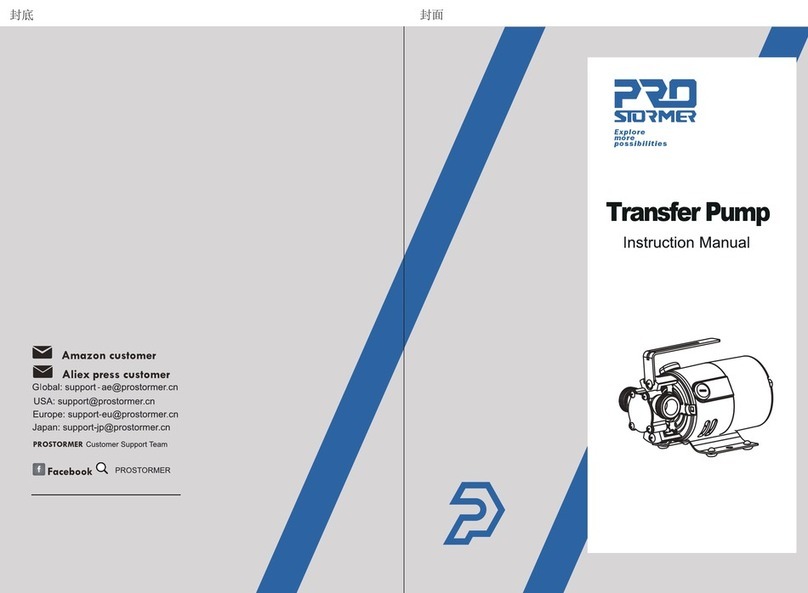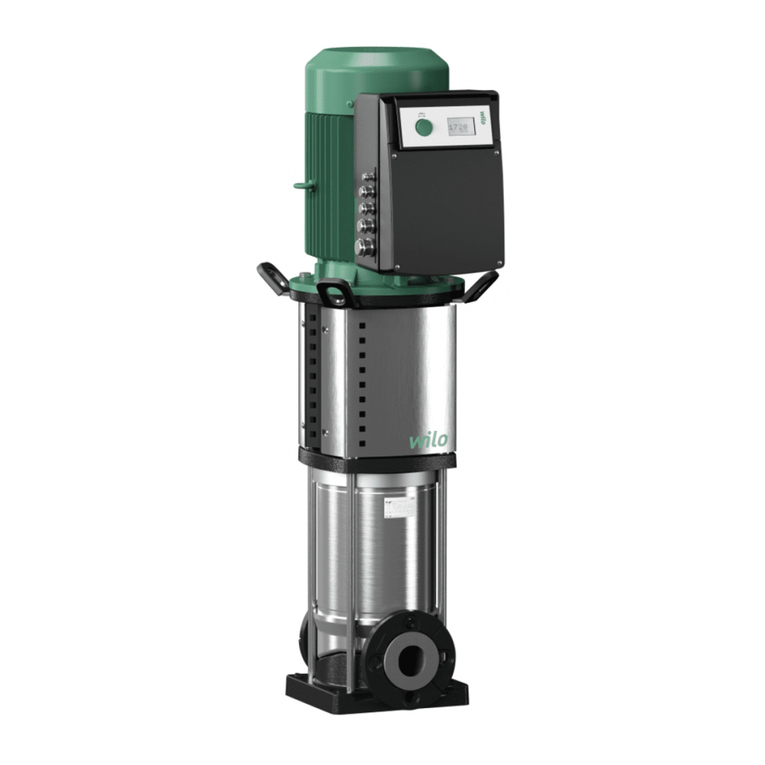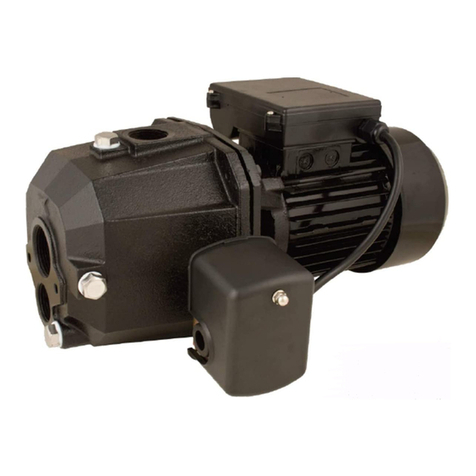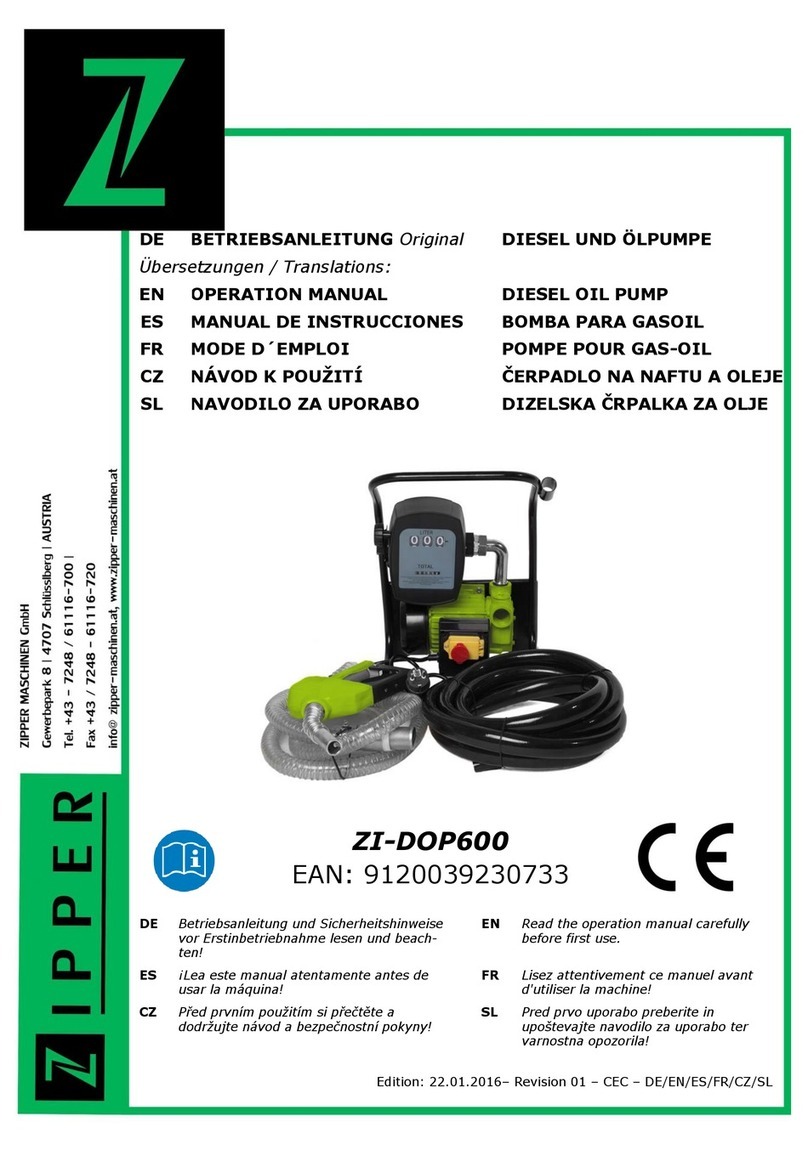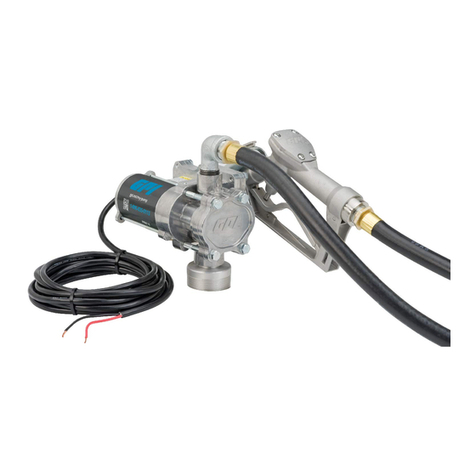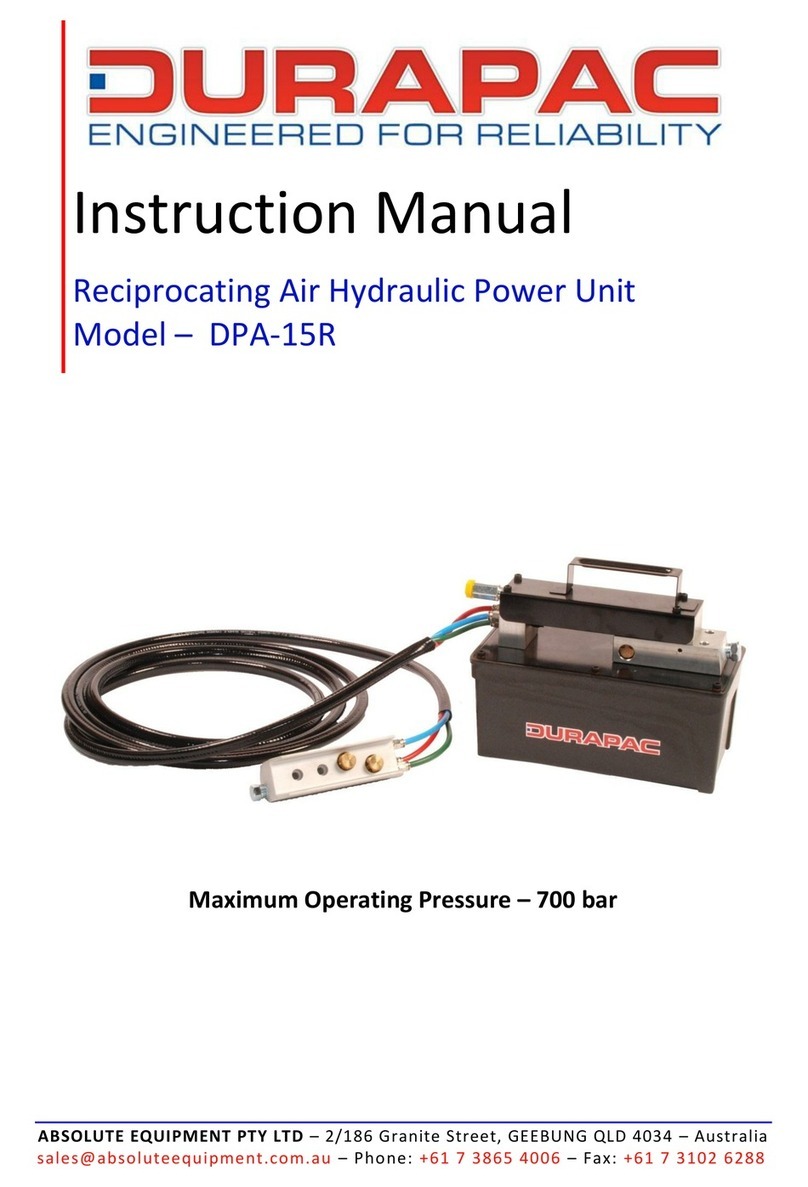PRO STORMER BDP40020 User manual

SUBMERSIBLE WATER PUMP
BDP40020
BDP75020

2
Notes regarding the operating manual............................. 3
Safety .............................................................................. 4
Information about the device........................................... 8
Transport and storage.......................................................11
Assembly and installation.................................................11
Operation ........................................................................14
Errors and faults...............................................................16
Maintenance ...................................................................18
Disposal ..........................................................................20
Before using your pump:

3
Read this entire instruction leaflet carefully. It contains important information in relation to the
use of your pump and precautionary measures that may need to be taken. Reading these
instructions thoroughly will ensure you get the very best performance from the product and
ensure maximum safety. Any use, other than set out in this leaflet, could cause damage, injury
and represent a hazard; it will also invalidate the guarantee.
Keep this booklet in a safe place for reference.
Notes regarding the operating manual Symbols:
Warning of electrical voltage
This symbol indicates dangers to the life and health of persons due to electrical voltage.
Warning
This signal word indicates a hazard with an average risk level which, if not avoided, can result in
serious injury or death.
Caution
This signal word indicates a hazard with a low risk level which, if not avoided, can result in minor
or moderate injury.
Notice
This signal word indicates important information (e.g. material damage), but does not indicate
hazards.
Info
Information marked with this symbol helps you to carry out your tasks quickly and safely.
Follow the manual
Information marked with this symbol indicates that the operating manual must be observed.
Do not use damaged power cables or mains plugs
Staying in water prohibited
This symbol indicates that the device must not be operated with persons or animals in the water.
Do not use at freezing temperatures
This symbol indicates that the device must be protected from frost.
Keep out of the reach of children – not a toy
This symbol indicates that the device is not a toy and is thus not suitable for children.

4
Do not pull the mains plug by the power cable
This symbol indicates that you must not pull the mains plug out of the socket by the power cable.
Pull the mains plug
This symbol indicates that the mains plug must be removed from the socket when the device is
not in use.
Not suitable for pumping potable water
This symbol indicates that the device is not suitable for pumping potable water.
Submerge pump at a slight angle
This symbol indicates that the pump must be submerged into the water at a slight angle to allow
the remaining air to escape.
Warranty and liability
The device complies with the fundamental health and safety requirements of the applicable UL
regulations and was tested at the factory for perfect functionality multiple times.
However, if faults in the functionality occur and cannot be remedied with the measures in the
chapter Errors and faults, please get in touch with your dealer or distributor.
When making a warranty claim, supply the device number (see label on the device).
When manufacturer's instructions or legal regulations have not been followed, or after
unauthorised changes to the device are made, the manufacturer is not responsible for the
resulting damages. Changes to the device or unauthorised replacement of individual parts can
drastically impact the electrical safety of this product and will result in the loss of the warranty.
Liability does not extend to damages to people or property caused by the device being used
other than as described in the instructions in this operating manual. Subject to changes to
technical design and model changes as part of constant development and product improvement
without prior notice.
No liability is accepted for damages resulting from improper use. In such a case, any warranty
claims will be voided also.
Safety
Read this manual carefully before starting or using the device. Always store the manual in the
immediate vicinity of the device or its site of use!
Warning

5
Read all safety warnings and all instructions.
Failure to follow the warnings and instructions may result in electric shock, fire and / or serious
injury.
Save all warnings and instructions for future reference.
This appliance can be used by children aged from 8 years and above and persons with reduced
physical, sensory or mental capabilities or lack of experience and knowledge if they have been
given supervision or instruction concerning use of the appliance in a safe way and understand the
hazards involved. Children shall not play with the appliance. Cleaning and user maintenance shall
not be made by children without supervision.
General safety
•Do not use the device in potentially explosive rooms.
• Do not use the device in aggressive atmosphere.
• Check accessories and connection parts for possible damage prior to every use of the device.
Do not use any defective devices or device parts.
• Before carrying out maintenance, care or repair work on the device, remove the mains plug
from the mains socket. Hold onto the mains plug while doing so.
• When positioning the device, observe the minimum distances from walls and other objects
as well as the storage and operating conditions specified in the Technical data chapter.
General safety warnings – Electrical safety
• The device is to be supplied with a rated residual current of no more than 13 Amp by means
of an RCD (Residual Current protective Device).
• Ensure that all electric cables outside of the device are protected from damage (e.g. caused
by animals). Never use the device if electric cables or the power connection are damaged!
• The electrical connection must correspond to the specifications in chapter Technical data.
• Insert the mains plug into a properly secured mains socket.
• Switch the device off and disconnect the power cable from the mains socket when the
device is not in use.
• Do not under any circumstances use the device if you detect damages on the mains plug or
power cable.
If the supply cord is damaged, it must be replaced by the manufacturer, its service agent or
similarly qualified persons in order to avoid a hazard. Defective power cables pose a serious
health risk!
• Should the connection line of the device be damaged, it must be replaced by the
manufacturer, his customer service or similarly qualified personnel in order to avoid hazards.
• Should there be a risk of flooding, install the plug connections in a flood-proof area. There is
a risk of electric shock!
• Make sure that the mains voltage corresponds to the specifications on the nameplate.
• Have all electrical installations carried out by an expert according to the national regulations
and the device-specific requirements.
• Do not use the power cable to drag the device.

6
• Hold onto the mains plug while pulling the power cable out of the mains socket.
• Protect the power supply cable against heat, oil and sharp edges.
• Only use splash-proof extension cables intended for outdoor use whilst observing the
device's power input. Before using cable drums, always unroll the cable completely. Check
the cable for damage.
• Before performing any work on the device, in case of leaks in the water system, before
taking work breaks or when not in use, remove the mains plug from the mains socket.
General safety warnings – Personal safety
• Never use the device with persons or animals in the water or pumping medium or if they
could access it. There is a risk of electric shock!
• Never insert any objects or limbs into the device.
• This appliance is not a toy! Keep away from children and animals. Do not leave the device
unattended during operation.
Device-specific safety warnings for submerged pumps
•Do not leave the device running unattended to ensure an early detection of when the device
runs dry or switches off automatically. This would damage the device. Regularly check the
float for proper functioning.
• Please bear in mind, that the device is not suitable for continuous operation (e.g. for
watercourses in garden ponds). Check the device for proper functioning on a regular basis.
• Keep in mind, that lubricants are used within the device. These might potentially cause
damages or contaminations if emitted. Do not use the device for drinking water or in garden
ponds with either a fish population or valuable plants.
• The device is not to be carried by holding it at the power supply cable or hose. Do not fasten
it there either.
• Do not place any objects on the device – not even to weight it down. The device will sink to
the ground due to its own weight.
• After the set-up of the device, its mains plug must be readily accessible during operation.
• Wear sturdy shoes to protect yourself against electric shock.
• Before taking the device into operation, have the following checked by an expert:
– earthing, neutral conductor and RCD must be functioning properly and correspond to the
national regulations,
– electrical plug connections must be protected from moisture.
• Provide appropriate frost protection.
Intended use
The device is only suited for draining, conveying and pumping over the following media:
• clear water and waste water
• non-corrosive suds (e.g. leaking washing machine)
• slightly chlorinated water
When doing so, the water must not contain any suspended matter exceeding a maximum particle

7
size of 1/2 inch. The device is fully submersible (watertight encapsulation) and can be immersed
up to 23 ft into the conveyed medium.
The water temperature must not exceed 35 °C.
The device may temporarily be used for e.g.:
• pumping out flooded basements
• emptying tanks and containers
• the water withdrawal from wells and shafts
Improper use
•This submersible pump has been designed for private usage in or around the home and
garden.
•The device is not suitable for continuous operation (e.g. as recirculation pump for ponds).
This type of use will substantially shorten the pump’s life expectancy.
• Using the device in swimming pools and the like is prohibited.
• The device is not suitable as permanent, automatic overflow protection of e.g. wells or
fountains or for the regulation of the groundwater level. Use a stationary waste water
pumping system for building and property drainage for these purposes.
• The device is not suitable for increasing the pressure of existing water supply networks.
• The device is not suitable for pumping potable water.
• The device must not be used for aggressive, abrasive, caustic, combustible or explosive
pumping media, e.g.:
–brine
–sandy water
–food
–cleaning agents
–fuels (e.g. petrol, diesel)
–oils
–greases
–petroleum
–nitro-cellulose thinner
–waste water from lavatories and urinal installations
• The device must not be used at freezing temperatures.
• Any unauthorised modifications, alterations or structural changes to the device are
forbidden.
• Any operation other than as described in this manual is prohibited. Non-observance renders
all claims for liability and guarantee null and void.
Personnel qualifications People who use this device must:
•be aware of the dangers that occur when working with electric devices in damp areas.
• have read and understood the operating manual, especially the Safety chapter.
Residual risks
Warning of electrical voltage
Work on the electrical components must only be carried out by an authorised specialist
company!

8
Warning of electrical voltage
Before any work on the device, remove the mains plug from the mains socket!
Hold onto the mains plug while pulling the power cable out of the mains socket.
Warning
Dangers can occur at the device when it is used by untrained people in an unprofessional or
improper way! Observe the personnel qualifications!
Warning
The device is not a toy and does not belong in the hands of children.
Warning
Risk of suffocation!
Do not leave the packaging lying around. Children may use it as a dangerous toy.
Note
If you store or transport the device improperly, the device may be damaged.
Note the information regarding transport and storage of the device.
Behaviour in the event of an emergency
1. In an emergency, disconnect the device from the mains feed-in: Switch the device off and
disconnect the power cable from the mains socket. Hold onto the mains plug while doing so.
2. Do not reconnect a defective device to the mains.
Overheating protection
The device is provided with a thermal protection circuit which is activated by overheating of the
device and then switches the device off.
Allow the device to cool down and switch it off. Investigate the cause of overheating. Should the
problem persist, please contact the customer service.
Information about the device
Device description
The submerged waste water pump is suited for draining, conveying and pumping over clear water
with the contained suspended matter not exceeding a maximum particle size of 16 mm.
A float ensures the automatic switch-on and switch-off at a respectively defined height.
Additionally, the switch-on/-off height can be finely adjusted within the specified range by means
of a locking device, see technical data.
The water temperature must not exceed 35 °C.

9
Info
The illustrations in this operating manual feature the device by way of example.
Some using or operation functions are similar or the same, but some appearance
details will be different from the real device!
Symbols on the device
Symbols
Meaning
Symbols
Meaning
Do not use damaged power
cables or mains plugs
General warning sign
Not suitable for pumping
potable water
Warning of electrical voltage
Keep out of the reach of
children – not a toy
Pull the mains plug when the
device is not in use
Staying in water prohibited Follow the manual
Do not use at freezing
temperatures
Dip the pump into the water
at a slight angle to allow the
remaining air to escape
Do not pull the mains plug
out of the socket by the
power cable
Device depiction
(Fig.1)
No.
Designation(see fig.1, fig.2, fig3)
1
power cable
2 transport handle / attachment for nylon cord
3 switch knob(manual/auto)
4 float switch house
5 suction opening
6 connection with 1 ½" external thread(remove 7)
7 reducer
8 main pump house

10
(fig.2) (fig.3)
Technical data
Transport and storage
Notice
If you store or transport the device improperly, the device may be damaged.
Note the information regarding transport and storage of the device.
Transport
Before transporting the device, observe the following:
Parameter
Model
BDP40020
BDP75020
Power consumption
1/2 HP (3.2 A)
1 HP (4.1 A)
Power supply
120 V ~ 60 Hz
120 V ~ 60 Hz
Max. flow rate
2110 GPH
3500 GPH
Max. pump height
16 Ft
26 Ft
Max. submersion depth
23 Ft
23 Ft
Max. water temperature
35 °C
35 °C
Protection type
IPX8
IPX8
Minimum operating depth
5 ½" (AUTO)
2 ½" (Manual)
5 ½" (AUTO)
2 ½"(Manual)
Max. water level after suction
2" (AUTO)
3/4" (Manual)
2" (AUTO)
3/4" (Manual)
Cable type & length
18AWG*3C SJTW*16 Ft
18AWG*3C SJTW*16 Ft
Protection class
I
I
Weight approx.
7.7 lbs
11.0 lbs
Dimensions
(length x width x height)
8.6 x 7 x 12 inch
8.6 x 7 x 12 inch
Max. particle size
1/2 inch
1/2 inch
Height for switch-on
5 ½" (AUTO)
2 ½" (Manual)
5 ½" (AUTO)
2 ½" (Manual)
Height for switch-off
2" (AUTO)
3/4" (Manual)
2" (AUTO)
3/4" (Manual)
Hose connection, inner diameter
1"; 1
1’’;1
Threaded connection
1"; 1 ½"
1"; 1 ½"

11
• Hold onto the mains plug while pulling the power cable out of the mains socket.
• Do not use the power cable to drag the device.
Storage
When the device is not being used, observe the following storage conditions:
• dry and protected from frost and heat
• in an upright position where it is protected from dust and direct sunlight
• with a cover to protect it from invasive dust if necessary
• Place no further devices or objects on top of the device to prevent it from being damaged.
If you do not use the device for an extended period of time, it must be cleaned thoroughly after
its last application and before recommissioning. Deposits and residues could lead to start-up
difficulties.
Assembly and installation
Scope of delivery
• 1 x submerged waste water pump
• 1 x reducer for inner diameters 1 inch and 1 as well as for 1'' internal threads
• 1 x manual
Unpacking the device
1. Open the cardboard box and take the device out.
2. Completely remove the packaging.
3. Fully unwind the power cable. Make sure that the power cable is not damaged and that you
do not damage it during unwinding.
Start-up
Connecting the pipe or hose line
The device may be operated using either a hose line or a pipe. Ex factory, the device is delivered
with a 1 ½"external thread. Please observe the following information regarding the water
discharge:
• Please note that making use of the reducer (7) might decrease the device performance. The
reducer (7) should be shortened to the used diameter so as not to decrease the device
performance unnecessarily.
• Please note that the device cannot be moved as flexibly when using a solid pipe.
• Please note that the maximum particle size is to be reduced in proportion to the hose or
pipe diameter.
• Please note that the conveying capacity declines with an increasing length of the water
discharge line.
• connect the hose connector to the fitting. The hose connector goes from 1" to 1 1/2 ". If you
are exclusively using a more wide hose, you can remove the remaining piece of the fitting
with a sharp knife or saw. Attach the hose to the appropriate part of the connector with a
hose clamp (or turn it on it). The best results of pumping efficiency are achieved with a 1 1/2
" hose.

12
Hose line
Info
If required, you can cut the reducer (7) off at the desired diameter.
1. Screw the reducer (7) onto the connection with 1 ½" external thread (6).
2. When using a hose without thread: slide an appropriate hose clamp onto the hose.
( fig. 4) (fig.5)
3. Push the hose (inner diameter 1"; 1 ½") onto the reducer (7) all the way to the stop.(see fig.5)
(see fig.6) (see fig.7)
4. Affix the hose by means of the hose clamp.
5. When using a hose with internal thread (1''): screw the hose connection onto the reducer 7.
(see fig.6)
6. Alternatively, you can also screw a hose with external threading (1 ½") directly onto the outlet
of pump. (see fig.7)
Pipe
1. If possible, screw the pipe directly into the connection with 1 ½" external thread (6) or
use a suitable adapter.(see fig.7)
Adjusting the float switch
The device comes equipped with a intergrated float switch which switches the device on or
off automatically or manually according to the water level. Check the intergrated float
switch for proper functioning at regular intervals.

13
Switching point
BDP40020
BDP75020
Height for switch-on
Approx. 1 inch
Approx. 1 inch
Height for switch-off
Approx. 3/4 inch
Approx. 3/4 inch
Please observe the following information regarding the float switch:
• Make sure that the float switch always has enough clearance and is not permanently
activated. This could prevent the automatic switch-off causing the device to run dry. This
would damage the pump.
• Make sure that the float switch is able to move freely and does not suffer from a limited
mobility caused by obstacles.
Positioning the device
Please observe the following information regarding the device set-up and before switching
the device on:
• Do not leave the device running unattended.
• Make sure that the device is firmly placed on the ground or safely suspended or stable
location, particularly if you want it to work automatically.
• ensure that the suction openings are not blocked (not even partially). if the pump is
positioned on a soft surface( e.g. a sand bed), place it on a tile or something similar.
• When using the device in bodies of water with natural, muddy ground, set the device
up at a slightly elevation position, e.g. on bricks.
• Check whether the hose or pipe was attached properly.
• Make sure that the power cable (1) is not under tensile load and has enough clearance.
• Make sure that the mains connection corresponds to the specifications provided in the
technical data.
• Check the mains socket for its proper condition and sufficient fusing.
• Make it impossible for moisture to reach mains plug or socket.
There is a risk of electric shock!
Warning of electrical voltage
Electric shock from damaged power supply cable. Make sure not to hold or suspend the
device by the power supply cable under any circumstances.
Notice
At the bottom of ponds and other waterbodies deposits may have accumulated over time.
To prevent the device from being damaged, do not lower it all the way to the ground unless
you are certain that the water is clean, in other words that the size of the dirt particles in the
water does not exceed 16 mm.
1. Fasten the supplied nylon cord to the transport handle (2) at the top of the device.(see
fig. 8)

14
(fig. 8) (fig.9)
2. Lower the device into the water at a slight angle to allow any remaining air to
escape.(see fig.9)
3. If you want the device to be positioned on the ground, ensure that the latter is even.
4. Attach the nylon cord to an easily accessible position, so you can pull the device back
out after pumping has been completed.
Operation
Warning!!! Before the device is used for the first time, the air exhausting process
must be completed! Otherwise, the device may not pump water out!
You can adopt two method as below:
1. First put the device into the water, turn the float switch(3) to the M position,
and then switch to the AUTO position after the device is discharged, finally put it
into the deep water.
2. Put the device into the water, turn the float switch(3) to the AUTO position, wait
for about 2 up to 5 minutes, after the device completes the pumping action,
finally put it into the deep water.
Switching the device on
Once you have completely installed the device as described in the Start-up chapter, you can
switch it on.
Automated function
The pump has an intergrated float. Set the switch to the AUTO position( see diagram A
position). once you have plugged the device into the socket, the pump will switch on
automatically when the water exceeds the start-level and switch off when the stop-level has
been obtained. this means that the pump can be left on at all times and will keep the water
in a cellar or boat, for example, at the required level. bear in mind that this pump is not
designed to be used continuously, it must be switched off at regular intervals. despite the
fact that the pump works automatically, regular supervisions is required in order to ascertain
that it has not encountered and functional problems and that it has not been damaged(see
also: overheating safeguard).

15
(fig.10)
Manual function
Set the switch to the MANUAL positon(see diagram M position)
the pump will now not automatically switch off but carry out pumping, even if the
remaining water level is reached and the pump runs dry. switch it off immediately!
Warning! a long-time runs without water which will affect the life of the device.
you must always supervise the pump during manual operation.
Overheating safeguard
Your submersible pump is equipped with an overheating safeguard. this switches the pump
off automatically if the motor gets too hot. Once it has cooled down sufficiently, the pump
will automatically switch on again.
there is always a cause for overheating: the fan may have become jammed, a bearing may
be worn, the pump can run dry etc. and if the cause is not removed, the device will overheat
once again. If this process is repeated too often it may cause serious damage to your pump.
try to establish what is wrong and resolve the problem. If the pump needs to be opened up
you must take it to your supplier or an accredited professional.
if there is insufficient supervision of a pump that is functioning automatically, the pump may
break down despite the presence of the overheating safeguard. The user is always
responsible for supervising the device!
Warning of electrical voltage
Do not touch the mains plug with wet or damp hands.
1. Plug the mains plug into a sufficiently fused mains socket.
The device will be switched on when the float switch is situated above the set or
the maximum switch-on height.(see fig.11 on position b)
The device will be switched off as soon as the float switch reaches the set or the
minimum switch-off height.(see fig.11 on position a)

16
(fig. 11)
Info
Once the device has been switched off, any water still remaining in the line can flow back
through the device.
Warning of electrical voltage
Do not touch the mains plug with wet or damp hands.
Notice
Running dry can cause damage to the device. Switch the device off before it can run dry.
1. Hold onto the mains plug while pulling the power cable out of the mains socket.
2. If necessary, pull the device out by means of the nylon cord.
3. Lock the float switch in the following position:
With the float switch affixed in M position, the device is switched on permanently.
4. Lower the device into the water at a slight angle to allow any remaining air to escape.
Make sure that the position of the float switch does not change.
5. Plug the mains plug into a sufficiently fused mains socket.
The device switches on.
6. Oversee the pumping process.
7. When the device starts to suck in air, disconnect the power cable from the mains socket
by holding onto the mains plug.
Info
If the device switches off again after only a brief period of operation, the float switch might
have come loose. Fix the float switch again as depicted.
Shutdown
Warning of electrical voltage
Do not touch the mains plug with wet or damp hands.

17
1. Hold onto the mains plug while pulling the power cable out of the mains socket.
2. If necessary, pull the device out by means of the nylon cord.
3. Clean the device according to the Maintenance chapter.
4. Store the device according to the Storage chapter.
Errors and faults
Warning of electrical voltage
Do not touch the mains plug with wet or damp hands.
Warning of electrical voltage
Tasks which require the housing to be opened must only be carried out by authorised
specialist companies.
• Switch the device off.
• Hold onto the mains plug while pulling the power cable out of the mains socket.
The device has been checked for proper functioning several times during production. If
malfunctions occur nonetheless, check the device according to the following list.
The device does not start:
• Check the power connection.
• Check the power cable and mains plug for damages.
• Check the on-site fusing.
• Check whether the float switch is located above the automatic switch-on position.
• The device might have overheated and the thermal protection circuit is activated.
If so, wait for approx. 10 minutes before restarting the device. If the device is not
starting, have the electrics checked by a specialist company .
• The water temperature is above 35 °C and the thermal protection circuit is activated.
• Check whether there are any foreign objects in the air intake opening, the impeller, the
reducer (7) and / or the hose or pipe.
The device is running, but not pumping any water:
• Check the inside of the device for any remaining air. To do so, lower the device into the
water at a slight angle and wait for the entire air to escape.
• Check whether the minimum water level has been reached, see technical data. In order
to start pumping, the device requires a minimum water level.
• Check whether the hoses are blocked and whether the water contains any suspended
matter with a particle size of more than 16 mm, which could clog up the device.
• Check whether the used hose diameter is too small.
• Check whether the hose line is kinked or blocked. Remove kinks and / or blockages.
• Check reducer (7) for blockages.
The device is not switching off automatically:
The float switch is hindered from lowering. Check whether the float switch can move freely.
Remove any blockages or ensure sufficient freedom of movement for the float switch.

18
The device switches off after a brief runtime:
• Check whether the water temperature is too high. The device might have overheated
due to a too high water temperature and the thermal protection circuit is activated.
• Check the power connection.
• Check the power cable and mains plug for damages.
• Check the on-site fusing.
• Check whether the hoses are blocked and whether the water contains any suspended
matter with a particle size of more than 1/2 inch, which could clog up the device. The
device might have overheated due to the blockage and the thermal protection circuit is
activated.
Insufficient or decreasing conveying capacity:
• Check whether the hoses are blocked and whether the water contains any suspended
matter with a particle size of more than 1/2 inch, which could clog up the device.
• Check the hose diameter and the pump height. An excessive pump height paired with a
small hose diameter can cause a reduction of the conveying capacity.
• Check whether the hose line is kinked or blocked. Remove kinks and / or blockages.
Notice
Wait for at least 3 minutes after maintenance and repair work. Only then switch the device
back on.
Your device still does not operate correctly after these checks?
Please contact the customer service. If necessary, bring the device to an authorized pecialist
electrical company for repair.
Maintenance
Activities required before starting maintenance
Warning of electrical voltage
Do not touch the mains plug with wet or damp hands.
• Switch the device off.
• Hold onto the mains plug while pulling the power cable out of the mains socket.
Notes on maintenance
Inside the device, there are no parts that need to be maintained or lubricated by the user.
Your submersible pump is more or less maintenance-free. The only tasks you must carry out
are as follow:
• Carry out a regular visual inspection. Make sure the pump is not damaged. Check the
electrical cable, the plug and the float switch for damage too. If you discover damage, you
must take the device to your supplier or an accredited professional. Never attempt to carry
out repairs yourself and never open the pump!
• Regularly check that the float switch is working effectively, particularly if you have set
the pump to work automatically(every 3 months). Regularly remove residues from the float
with clean water. Turn the pump upsidedown, open the side-panel with a pin or similar and

19
remove(see diagram). Take the pin and float out and clean the float and the magnet.
Prevent damage or incorrect assembly and do not remove the float from the pin!(fig.12)
(fig.12)
• If you regularly use the pump at different locations, you must rinse with clean water
(inside and out) after each use.
• Keep the base of the well (or the tile on which the pump is positioned) free from mud
and residue.
•Ensure that the pump does not freeze. Before winter sets in,run the pump dry and
store it in a frost-free location.
Cleaning
• Clean the device with a soft, damp and lint-free cloth. Protect electrical components
from moisture. Do not use any aggressive cleaning agents such as cleaning sprays, solvents,
alcohol-based or abrasive cleaners to dampen the cloth.
• Disassemble the cover panel at the bottom of the pump in order to access the air
intake opening.(see fig.13)
• Rinse the reducer (7) as well as the other connections using clear water.(see fig.14)
• Clean the bottom of the pump as well as the impeller by means of a jet of water.
• Reattach the cover panel to the device.(see fig.15)
(fig.13) (fig.14)

20
(fig.15)
Disposal
The icon with the crossed-out waste bin on waste electrical or electronic equipment
stipulates that this equipment must not be disposed of with the household waste at the end
of its life. You will find collection points for free return of waste electrical and electronic
equipment in your vicinity. The addresses can be obtained from your municipality or local
administration.
The separate collection of waste electrical and electronic equipment aims to enable the
re-use, recycling and other forms of recovery of waste equipment as well as to prevent
negative effects for the environment and human health caused by the disposal of hazardous
substances potentially contained in the equipment.
This manual suits for next models
1
Table of contents
Other PRO STORMER Water Pump manuals
Popular Water Pump manuals by other brands
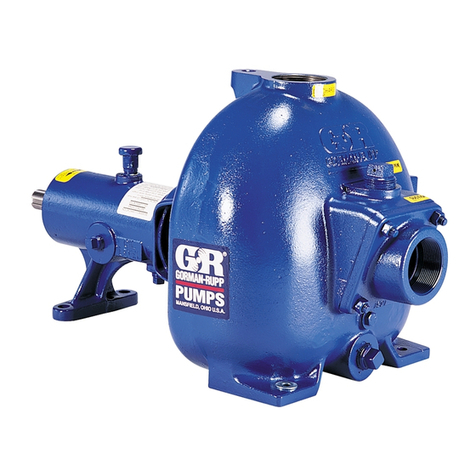
GORMAN-RUPP PUMPS
GORMAN-RUPP PUMPS 81 2D11-B Installation, operation and maintenance manual
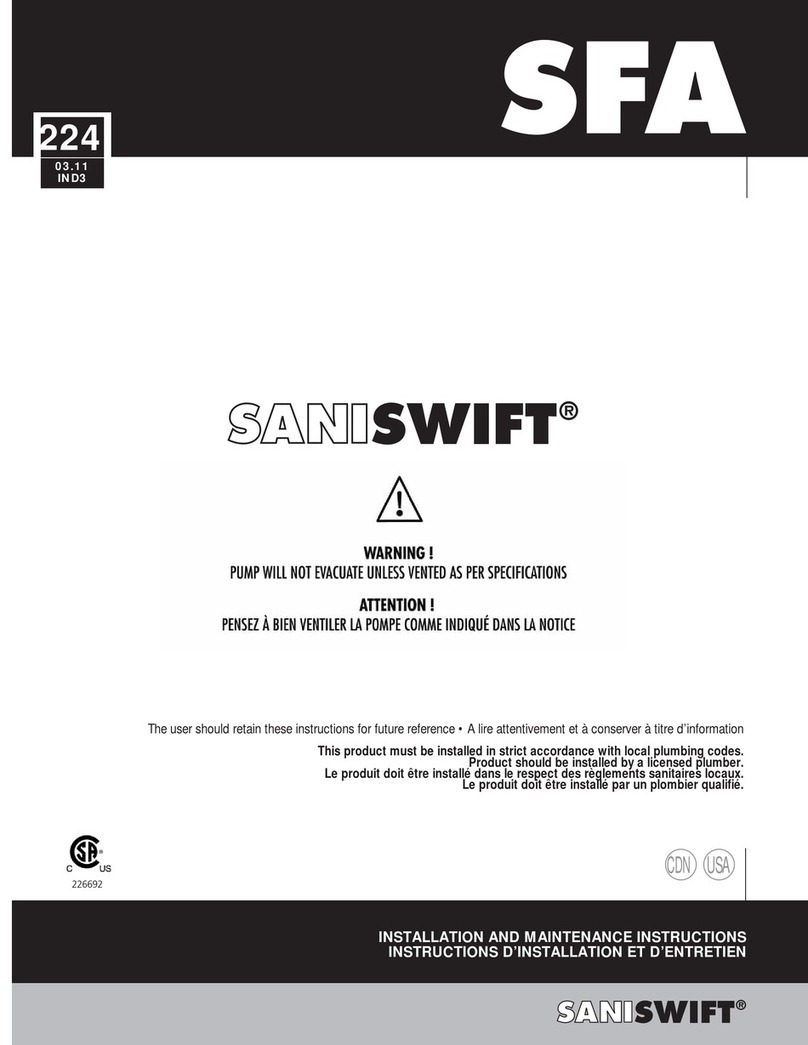
SFA-SANIFLO
SFA-SANIFLO SANISWIFT Installation and maintenance instructions
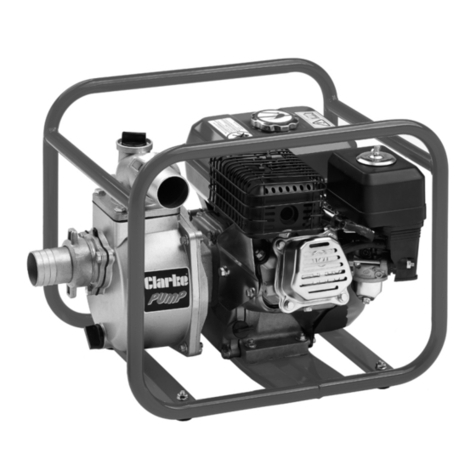
Clarke
Clarke PW50 Operation & maintenance instructions
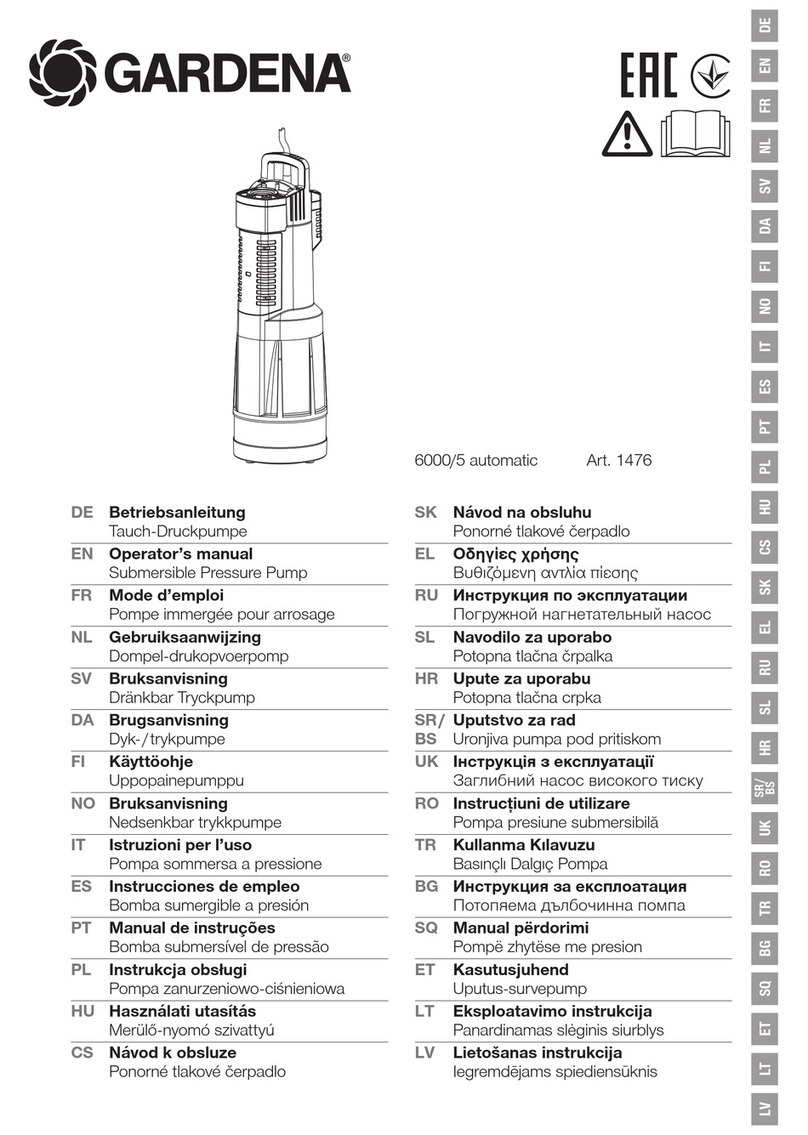
Gardena
Gardena 1476 Operator's manual
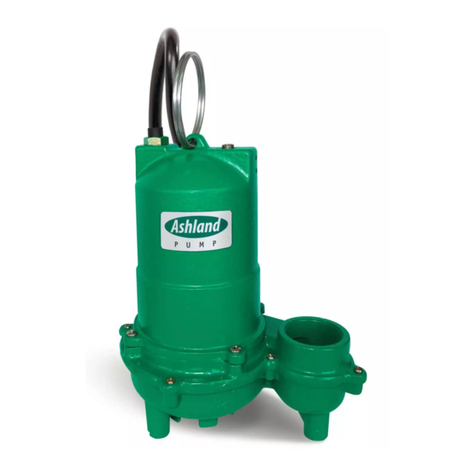
Ashland
Ashland EPH30 OPERATION, PERFORMANCE, SPECIFICATIONS and PARTS MANUAL
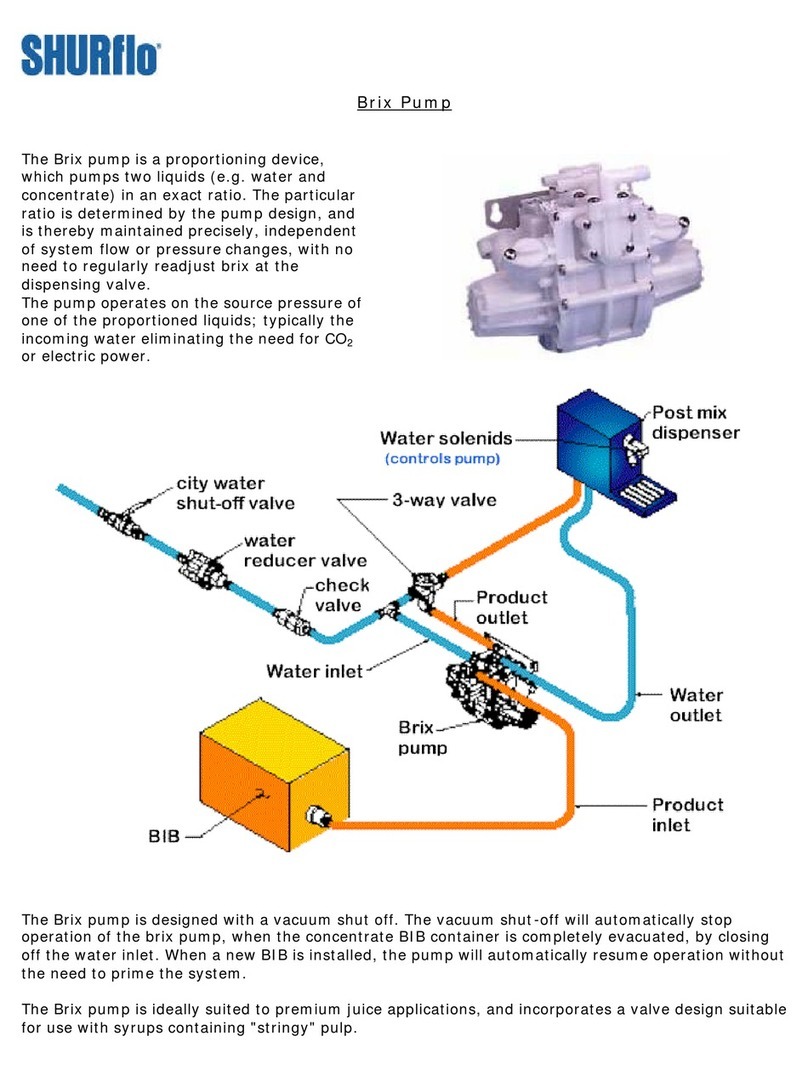
SHURflo
SHURflo Brix Series manual
